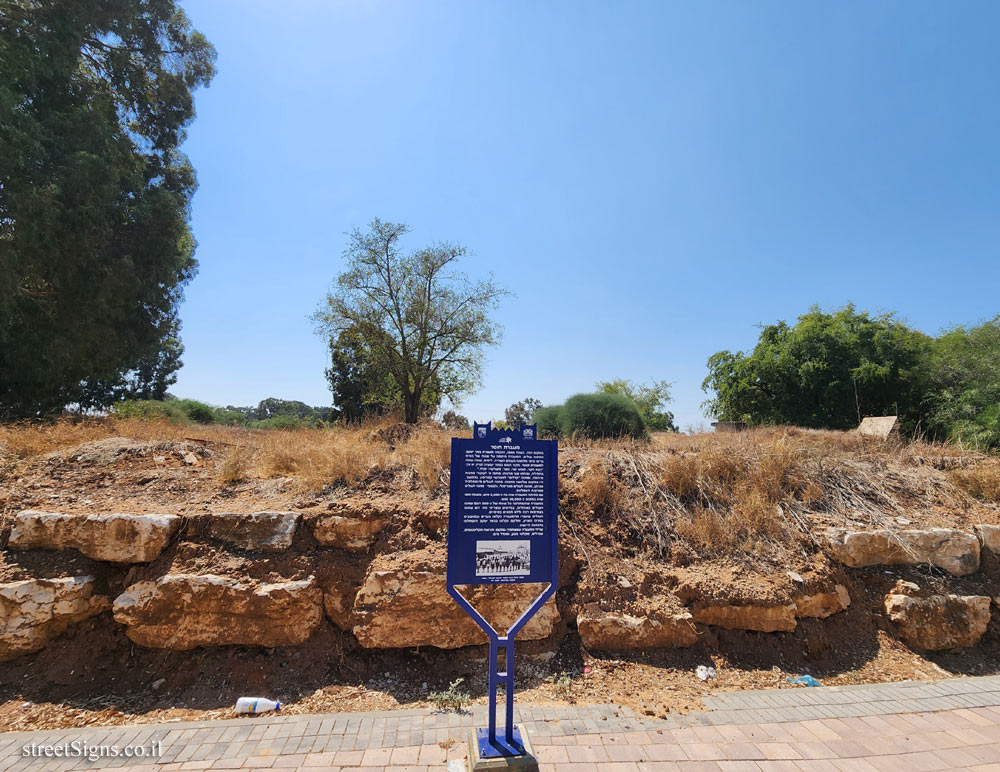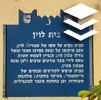The sign shape is rectangular but its head is designed according to the silhouette of the old building of the Gymnasia Herzliya, which serves as a logo of the Council for the Preservation of Heritage Sites in Israel
The place was photographed on the same day by the same photographer
 Click for a larger image Translation of the text on the sign
Click for a larger image Translation of the text on the sign:
Symbol of the Council for the Preservation of Israeli Heritage Sites
The emblem of Be’er Ya’akov Local Council
The emblem of the Ministry of Culture and Sport
Khotar transit camp In this place, in 1949, the Beer Ya’akov Ma’abara (transit camp) was established as an immigrant camp. The Ma’abara was established on the territory of a British base from the Second World War. Later, its name was changed to Ma’abara Khotar. The source of the name is in the book of Isaiah (chapter 11a): "And there shall come forth a shoot out of the stock of Jesse, and a twig shall grow forth out of his roots."
Initially, two camps were opened: Camp A for displaced persons from European camps, and Camp "Carlos" for deportees from Cyprus. Later, there were three camps: a camp for immigrants from Yugoslavia and Morocco, a camp for immigrants from Tripoli, and finally - a camp for immigrants from Islamic countries.
When the Ma’abara was opened, about 2,200 people lived there, and in 1951, about 35,000 people lived there.
In the Ma’abara, which covered an area of about 500 dunams, the immigrants were housed in tents, sheds and tin huts. They were housed very densely and without basic conditions.
The immigrants who passed through the crossing were absorbed in cities and settlements in the center of the country, and some were absorbed in Be’er Ya’akov and integrated into the leadership of the settlement.
The remains of the Ma’abara preserved on the spot: eucalyptus grove, paths, concrete shelters, and a water tower.
[Image]
Raising the flag at the "Love of Israel" school, 1956
Courtesy photo: Yehuda David

 Click for a larger image
Click for a larger image  Click for all signs belonging to Heritage Sites in Israel
Click for all signs belonging to Heritage Sites in Israel
 44 Meter |
44 Meter |  48 Meter |
48 Meter |  143 Meter |
143 Meter |  259 Meter |
259 Meter |  295 Meter
295 Meter